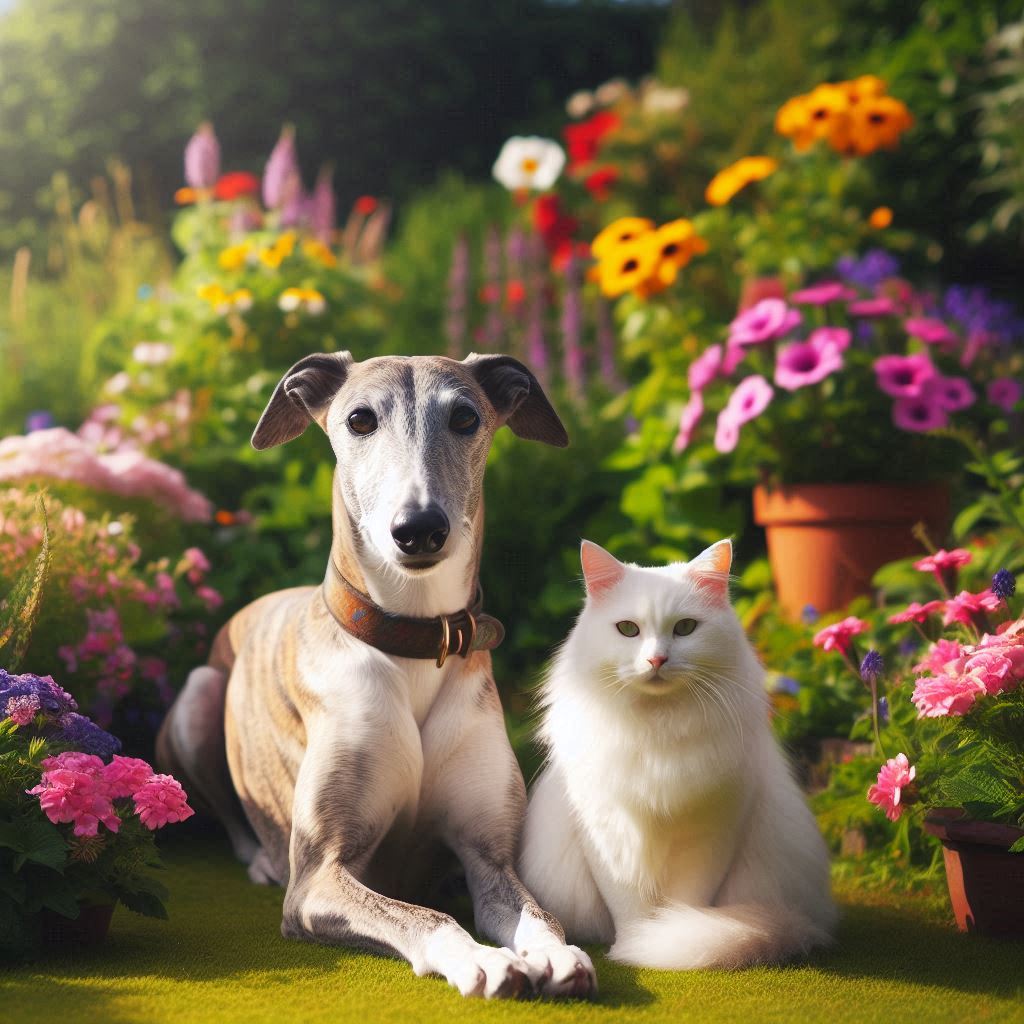Despite often being described as graceful, agile, and speedy canines associated with racing greyhounds, more and more of them are being adopted as household companions, which makes the question arise: are greyhounds good with cats? The answer to this question is not simple.
While greyhounds can have a strong prey drive owing to their past as hunters, many are able to live peacefully with cats under the right circumstances. Gradual introductions are vital in integrating a new greyhound into a home where a cat already lives, or vice versa.
Below we take a closer look at some of the factors that can affect a greyhound’s behavior with cats and what you can do to help these two enjoy each other’s company.
Factors Affecting Greyhounds’ Behavior towards Cats
Socializing History
One of the utmost determines if a greyhound will get along with cats or not, is the socialization background of the greyhound. Any exposure to cats early in their lives gain familiarity to cats, as this might happen in some foster homes or in other previous experiences. In adopting out, for instance, retired racing greyhounds are mostly kept in foster homes where they are introduced to other animals, including cats. If ever a greyhound has previously been living with cats, they are generally more likely to be fine with them in their new home.
Prey Drive
The degree of prey drive can be low or high in greyhounds. Because some greyhounds may still want to chase, a number of them have come to live with cats into retirement years with lower prey drives. The temperament of your greyhound is an important consideration for determining whether or not it is a good fit for the cat household.
Age of the Greyhound
Age probably is an additional factor affecting adjustment to a cat among greyhounds. Younger greyhounds are likely to have an active prey drive, particularly those in sub-prime or those freshly retired. The older dogs, probably out of the racing business for some time, would usually be miuch calmer and would be able to adjust to a house with cats.
Training and Control
Training is important if a greyhound is area to be introduced to a cat. Positive reinforcement techniques are able to teach the dog commands including leave it and stay, which serve best in controlling behavior. Any introductions between greyhound at this stage should see the animal under careful supervision, so being leery of these animals while acclimatizing is an absolute must.
Introducing a Greyhound to a Cat
Here’s how you can ensure things go smoothly:
- Start with Separation: For the time being, separate the greyhound from the cat and keep them in different parts of the house. Gradually, they will become familiar with each other’s scent by means of bedding swapping and scent transfer with any sort of towel.
- Visual Meet: After some days, let the animals see each other safely from a distance through either a baby gate or cat carrier so that they can get accustomed to one another without having any contact.
- SupervisedInteraction: Once both feel at ease with this arrangement, schedule a qualified visit with both animals. The greyhound should remain on the leash while letting the cat come closer at its own will. Be prepared to intervene if needed.
Continued Monitoring: Even after meeting, continue supervising future interactions for the safety of both pets.
Conclusion
As to whether owning a cat is made easier or harder by having a greyhound as a companion really depends on the individual greyhound. This prey drive, combined with previous experiences and socialization history, determines an individual’s behaviour around cats. With training, supervision, and gradual introductions, many greyhounds easily live with cats.
An example of dog and cat amicability. If you are thinking about adopting a greyhound and you have a cat, this means you have to be patient and have a lot of management. Greyhounds and cats can have a beautiful and peaceful relationship in a home setting if all the bases are covered.
Also read: Are Bacon Flavored Bubble Treats Safe for cats
